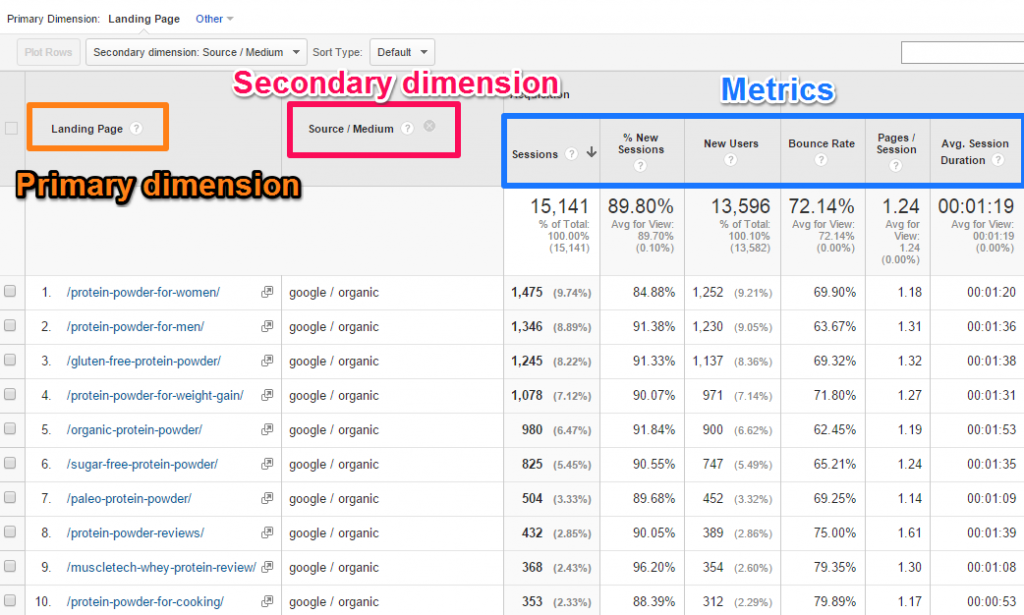Optimizing Information Analysis: Google Analytics Secondary Dimension Explained
Opening the Power of Second Measurement Analytics for Boosted Information Insights and Decision-Making
In the world of data analytics, primary dimensions usually take the spotlight, yet the real deepness of understandings lies within the realm of additional dimensions. These added data points use a nuanced perspective that can illuminate patterns and relationships not easily obvious in the beginning glance. By utilizing the power of second dimension analytics, organizations can reveal hidden fads, discover correlations, and essence more purposeful final thoughts from their data. The possibility for enhanced decision-making with the application of these secondary measurements is huge, promising a deeper understanding of intricate information sets and paving the way for even more informed calculated options.
Importance of Secondary Dimensions
Discovering the importance of additional dimensions in analytics reveals the surprise layers of data insights crucial for educated decision-making in numerous domain names. Secondary measurements offer a much deeper understanding of main information by using added context and perspectives. By including second dimensions right into analytics, organizations can remove more nuanced and comprehensive understandings from their datasets.
One secret importance of secondary measurements is their capability to section and categorize main data, enabling a much more thorough evaluation of particular subsets within a dataset. When looking at the information as a whole, this division allows businesses to recognize patterns, trends, and outliers that could not be noticeable. Secondary measurements assist in uncovering correlations and dependencies between various variables, leading to more precise forecasting and predictive modeling - secondary dimension.
Additionally, additional measurements play a crucial function in boosting information visualization and reporting. By including secondary measurements to visualizations, such as charts or charts, experts can produce a lot more informative and helpful representations of information, assisting in better interaction of findings to stakeholders. Overall, the combination of secondary dimensions in analytics contributes in opening the full capacity of data and driving evidence-based decision-making.
Secret Benefits of Making Use Of Additional Dimensions
Using secondary measurements in analytics provides companies a tactical benefit by enhancing the deepness and granularity of data understandings. One vital benefit of including additional measurements is the ability to segment and filter information, permitting a much more comprehensive evaluation of particular elements within a dataset. This division makes it possible for companies to acquire a much more nuanced understanding of their target market, efficiency metrics, and other crucial data factors. By exploring data using second measurements such as time, area, tool type, or user demographics, organizations can reveal patterns, trends, and correlations that may otherwise continue to be covert.
Furthermore, the utilization of second dimensions boosts the context in which primary information is interpreted. By leveraging second dimensions company website in analytics, companies can harness the complete potential of their information to drive far better decision-making and attain their business purposes.
Advanced Data Analysis Strategies
A useful site deep dive right into innovative information analysis techniques discloses sophisticated methods for drawing out beneficial insights from complex datasets. One such method is artificial intelligence, where algorithms are utilized to recognize patterns within information, anticipate results, and make data-driven choices. This approach permits the automation of logical version structure, allowing the handling of large volumes of data at a faster pace than typical approaches.
An additional advanced method is anticipating analytics, which uses statistical algorithms and maker discovering techniques to anticipate future results based on historic information. By examining patterns and patterns, services can anticipate consumer behavior, market trends, and potential threats, equipping them to make proactive choices.
Furthermore, message mining and belief evaluation are valuable methods for removing understandings from unstructured data sources such as social media sites comments, consumer testimonials, and study feedbacks. By analyzing message information, companies can recognize consumer viewpoints, recognize emerging patterns, and enhance their services or items based upon feedback.
Enhancing Decision-Making With Additional Measurements

Enhancing decision-making with secondary measurements makes it possible for businesses to make more informed and targeted tactical selections. As an example, by segmenting customer information based on second dimensions like acquiring history or involvement degrees, companies can tailor their marketing methods to specific target market sections, resulting in boosted conversion rates and client complete satisfaction. Furthermore, second measurements can help determine connections and relationships between various variables, enabling companies to make data-driven choices that drive growth and earnings.
Implementing Secondary Dimension Analytics
When including visit here additional measurements in analytics, companies can open deeper understandings that drive tactical decision-making and boost total efficiency. This requires recognizing the particular questions the organization looks for to respond to and the information points required to address them.

Furthermore, companies need to utilize progressed analytics tools and modern technologies to simplify the procedure of integrating secondary dimensions. These tools can automate data handling, analysis, and visualization, allowing companies to focus on analyzing insights instead than manual information adjustment.
Verdict
In conclusion, secondary measurement analytics play an important role in boosting data insights and decision-making procedures. By making use of sophisticated information analysis strategies and implementing additional measurements efficiently, companies can open the power of their information to drive critical company choices.
In the world of data analytics, main dimensions frequently take the spotlight, yet the real depth of insights exists within the world of secondary measurements.Using additional dimensions in analytics uses organizations a strategic benefit by enhancing the deepness and granularity of data insights. By leveraging second measurements in analytics, companies can harness the full possibility of their information to drive better decision-making and achieve their service objectives.
Carrying out information recognition procedures and normal audits can help preserve data quality and dependability.
By using sophisticated information analysis strategies and implementing second measurements successfully, companies can unlock the power of their information to drive critical company choices.